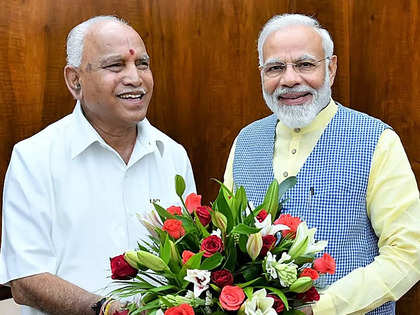
South of the Vindhyas has always been a challenging battleground for BJP. And, for that reason, Karnataka is politically precious for a party wanting to expand its pan-India presence. From the 130 Lok Sabha seats on offer between Karnataka, Andhra Pradesh, Telangana, Kerala, Tamil Nadu and Puducherry, BJP has 29. Of these, 25 are from Karnataka itself.
The southern states, therefore, account for less than 10% of BJP’s 303 seats in Parliament. So, arguably, for a party in its prime in most other parts, this may be the best period in its history to make the big push in the south. Doing so would, however, require more than just overcoming the formidable language frontier. It would need capturing the imagination of the electorate in a way it has done elsewhere.
Essentially, the party would have to break the old caste silos, widen its catchment and structure an effective campaign around Narendra Modi’s welfare development model. But the problem is that southern regional caste-based parties, unlike their northern counterparts, have been more effective with their welfare-cum-growth models over the years.
In fact, parties like TDP and AIADMK have been trendsetters, be it giving rice at affordable rates or freebies. The Left, too, has worked its welfare models more efficiently in Kerala than in previously held citadels like West Bengal and Tripura. Also, these states have, over the past 2-3 decades, fared well in creating centres of economic growth. Cities like Bengaluru, Hyderabad and Chennai have been preferred destinations for foreign investment since the 1990s. From IT to pharma and startups, the south has been home to India’s new economy. It has been core to recasting India’s tech national identity overseas.
Even today, top semiconductor chip labs in the US have invested in R&D outposts in Bengaluru and Hyderabad. In the defence sector, too, while there is a considerable push for investment in Uttar Pradesh and other states, most foreign entities like Lockheed Martin and Airbus have built their base operations around these two cities.
Regional parties of the south have, therefore, forced national parties to reinvent their approaches on the economy, welfare politics and affirmative action. At the same time, with wealth came high levels of corruption and personality-based cult politics, turning family-led parties into enterprises that relied on high electoral expenditure and caste loyalties to win elections. The fact is, these parties and their first families rarely expanded their vote base. If anything, they have invested heavily in securing their core vote bank from splintering. But in the light of looming succession battles and competing interests, it now appears that this phase in India’s southern politics may be drawing to a close.
The economic profile built through the 1990s and early 2000s, while still appealing, seems to have somewhat plateaued amid dwindling urban infrastructure and soaring welfare expenditure. While Karnataka and Telangana are still benefiting from Benguluru and Hyderabad, a lot is running on old steam.
So, is the south, India’s driving economic engine for the future, on the cusp of a big political shift? After all, an entire cast of regional satraps who embodied the past have either passed on, or are in the processing of passing on the baton to the next generation — mostly within their families, barring exceptions like AIADMK in Tamil Nadu and the Left in Kerala.
The families of Gowdas, B S Yediyurappa, Karunanidhi, YSR, KCR and Chandrababu Naidu, to name a few, are all grappling with the question, ‘What next?’ They are trying hard to align succession plans with their vote base. This backdrop does provide BJP an opportunity to make deeper inroads, given a relatively more stable central leadership at the moment. It would surely aspire to emerge as the pre-eminent national party alternative in the south. Which is why Karnataka may not just be another state election for BJP, but the start of a bigger move on the south keeping in sight the 2024 Lok Sabha polls.
Can BJP convert the nationwide Modi imprint into votes and seats in the south? While the party values Yediyurappa’s lingayat base, the idea is to expand BJP’s catchment on the basis of Modi’s pan-India appeal. On that score, BJP today does have a welfare (labharthi) model to counter regional populism of southern parties. But, alongside that, it needs a future economic plan tailored to the robustness of the south, one that can take the existing ecosystem to the next level.
In other words, if 2014 was about BJP cracking the Uttar Pradesh code, 2019 about expanding eastwards through Assam, West Bengal and the northeast riding on strong welfare politics, 2024 could well turn out to be BJP’s charge on the south. And, in that respect, Karnataka is the first pit stop to test the dent BJP can make for a stronger message across all southern states ahead of the Lok Sabha polls.










 Get Unlimited Access to The Economic Times
Get Unlimited Access to The Economic Times
